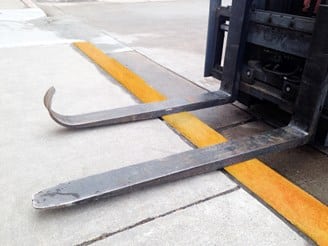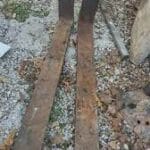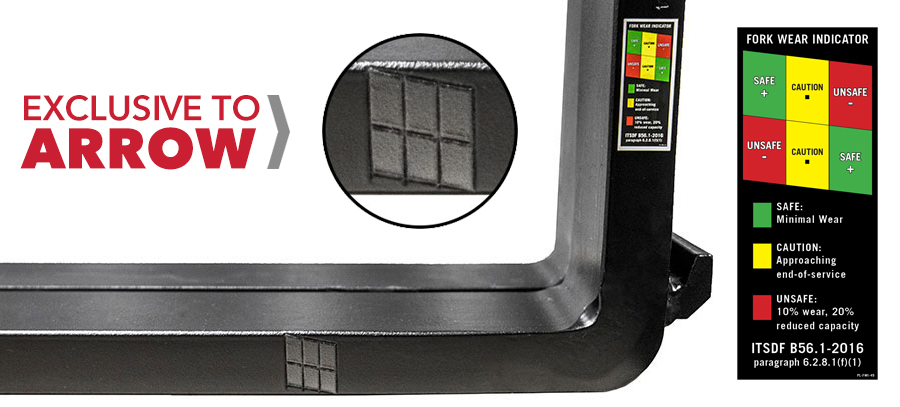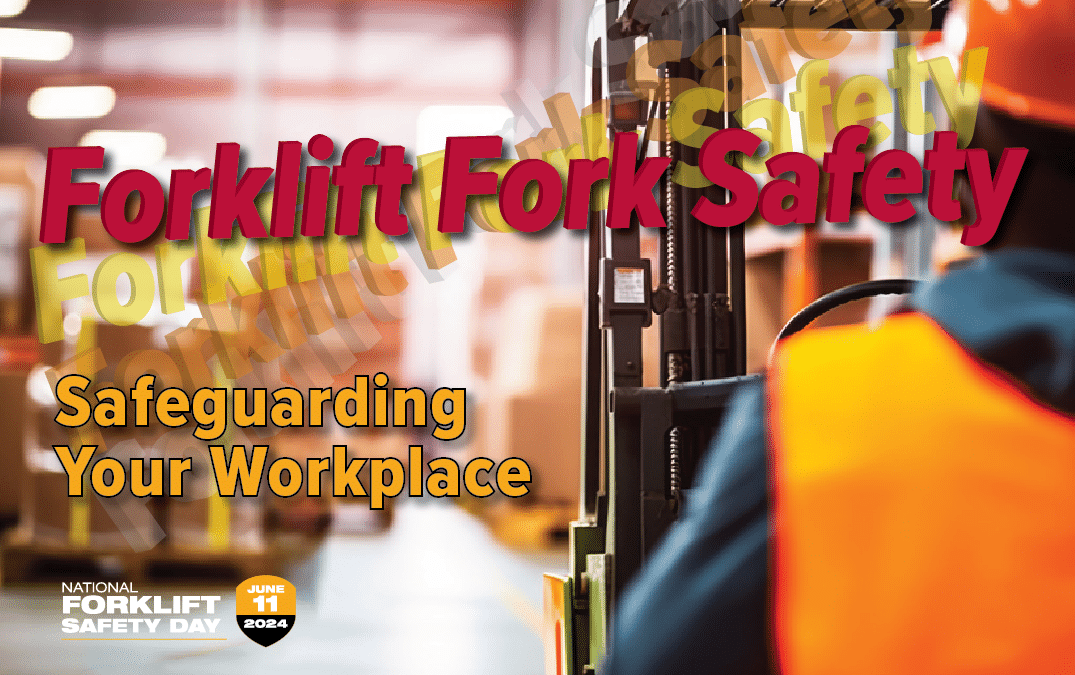In busy warehouses, manufacturing plants, and construction sites, forklifts are the workhorses that keep operations running smoothly. However, within the realm of forklift operation lies a crucial component often overlooked: the forklift forks themselves. These sturdy prongs, though seemingly straightforward, play a pivotal role in ensuring both operational efficiency and most importantly safety. In this blog post, we delve into the significance of forklift fork safety, highlighting key considerations and guidelines provided by the Occupational Safety and Health administration (OSHA).
Forklift forks, also called tines or blades, are the metal arms extending from the forklift carriage. They are designed to lift and transport heavy loads with precision and stability. Despite their robust construction, forklift forks are susceptible to wear and tear over time, especially when subjected to rigorous usage in demanding environments.
Early detection of wear and damage is crucial for preventing accidents and maintaining workplace safety.
Here are some common signs of wear on forklift forks to watch out for:

Cracks
Inspect forks for any visible cracks, particularly along the welds, heel or
stress points.

Bends
Check for bends or deformations that may compromise the structural
integrity of the forks.

Wear
Look for signs of wear on the fork tips, such as thinning or uneven
surfaces. Look for scuffs or scratches along the bottom of the heel.

Corrosion
Rust or corrosion on the forks can weaken them over time. Regularly
inspect for signs of corrosion and address them promptly.
The Occupational Safety and Health Administration (OSHA) mandates strict guidelines on forklift safety, including regulations specifically addressing forklift forks. According to OSHA standards (29 CFR 1910.178), forklift forks must be designed and manufactured to meet specific criteria to ensure safe operation. OSHA guidelines require forklift forks be replaced after 10% of wear, since that milestone de-rates fork capacity by 20%.
Employers must ensure that forklift forks are properly maintained and inspected regularly to follow OSHA standards. Failure to adhere to these regulations not only compromises workplace safety but also invites potential legal consequences.
Arrow’s dedication to quality starts with its dedication to safety. A three times (the load
rating) safety factor is applied during testing to ITSDF, ISO, & OSHA standards.
Additionally, Using the Arrow proprietary wear indicator ensures that not only are your
employees safe, but you can operate with peace of mind and at a negligible risk of violating
OSHA fork wear & replacement standards.
Arrow Attachments adds a proprietary feature to their after-market forks called a Fork Wear Indicator. A simple stamp into the side of the fork tine paired with a color-coded sticker makes it easy to quickly determine fork wear so you can plan for replacement and prevent fork-related accidents. The Fork Wear Indicator shows the wear on a fork at a glance and cuts sole reliance on trusty fork calipers.



